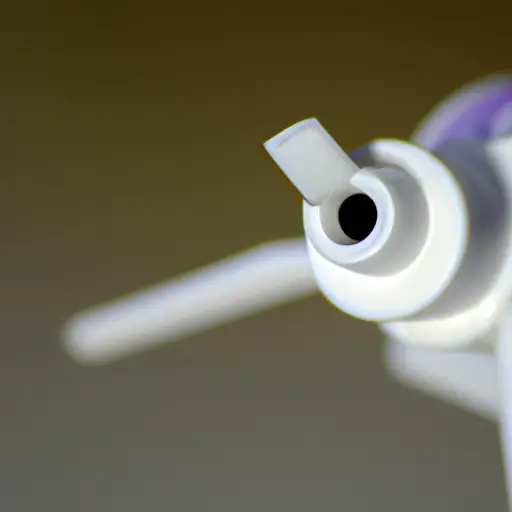When it comes to using an airless sprayer for painting, one inevitable question arises: can you leave paint in the sprayer after you’re done? We all know how much of a hassle it can be to clean up after a painting project, so wouldn’t it be convenient if you could simply leave the leftover paint in the sprayer for later use? In this article, we’ll explore the answer to this common query and provide you with some useful tips to ensure your airless sprayer stays in top shape. Say goodbye to unnecessary cleaning and hello to efficient painting!
Table of Contents
Can You Leave Paint In An Airless Sprayer?
Introduction
Painting can be a time-consuming task, especially when using an airless sprayer. Many of us wonder whether it’s possible to leave paint in the sprayer after we’ve finished our project, or if it’s necessary to clean it out every time. Well, the answer isn’t a simple yes or no. There are several factors to consider when determining whether it’s safe to leave paint in an airless sprayer, including the type of paint, the duration of storage, and the potential effects on the sprayer’s performance.
Factors to Consider
Before deciding whether to leave paint in an airless sprayer, it’s essential to consider a few important factors. The type of paint being used plays a significant role in determining whether it can be left in the sprayer. Different types of paint may have different storage requirements and properties that could affect the sprayer’s performance. Additionally, the duration of storage is crucial, as leaving paint in the sprayer for an extended period can potentially lead to clogs and other issues. Understanding these factors will help ensure the longevity and optimal functioning of your airless sprayer.
Types of Paint
The type of paint being used is an essential factor to consider when deciding whether to leave it in an airless sprayer. Water-based paints are typically easier to work with and clean. They have a lower risk of drying out or clogging the sprayer if left in overnight or for a short duration. On the other hand, oil-based paints tend to dry out more quickly and can lead to severe clogs if left in the sprayer for an extended period. Therefore, it is generally not recommended to leave oil-based paints in an airless sprayer for prolonged storage.
Duration of Storage
The duration for which you plan to leave the paint in the airless sprayer is vital. If you’re taking a short break between painting sessions or leaving the sprayer overnight, it may be safe to leave the paint in the sprayer. However, if you intend to store the paint for an extended period, it’s best to clean out the sprayer thoroughly to avoid any potential issues. Leaving paint in the sprayer for weeks or longer can cause the paint to dry and clog the system, affecting its performance and potentially leading to costly repairs.
Effects on Sprayer Performance
Leaving paint in an airless sprayer can have various effects on its performance. One of the most common issues is clogging, particularly when using oil-based paints. Paint residues left in the system can dry out over time, blocking the nozzle and causing a decrease in spray pattern quality. Additionally, dried paint can affect the pump’s overall efficiency and lead to wear and tear. It’s essential to monitor the sprayer’s performance after leaving paint in it to ensure it operates smoothly and effectively.
Cleaning and Maintenance
To ensure the longevity and optimal performance of your airless sprayer, regular cleaning and maintenance are crucial. Properly cleaning and maintaining your sprayer will help prevent paint from drying and clogging the system. After each use, flush the sprayer with an appropriate cleaning solution, usually water for water-based paints or a paint thinner for oil-based paints.
Thoroughly clean all components, including the nozzle, filters, and hoses, to remove any paint residues. Regular maintenance, such as lubricating internal parts and inspecting for any damage, can also help keep your sprayer in excellent working condition.
Tips for Leaving Paint in an Airless Sprayer
If you decide to leave paint in your airless sprayer for a short duration, here are some helpful tips to minimize the risk of clogging and ensure optimal performance:
- Keep the sprayer sealed: When not in use, ensure all openings and containers are tightly sealed to prevent the paint from drying out.
- Use a paint conditioner: Adding a paint conditioner to the paint can help extend its storage life by slowing down the drying process and minimizing the risk of clogs.
- Keep the sprayer in a controlled environment: Store the sprayer in a cool, dry place to minimize the chances of paint drying or getting contaminated.
- Monitor the spray pattern: When you resume painting after leaving the paint in the sprayer, check the spray pattern to ensure it is consistent and unaffected by any potential clogs or residue.
Common Mistakes to Avoid
While leaving paint in an airless sprayer can be convenient, certain mistakes should be avoided to prevent damage to the sprayer and compromised paint quality. Here are some common mistakes to watch out for:
- Ignoring the type of paint: Using the wrong type of paint and leaving it in the sprayer for an extended period can lead to serious clogs and damage.
- Skipping regular maintenance: Neglecting to clean and maintain the sprayer after each use increases the risk of paint residues drying and causing clogs.
- Failing to monitor performance: Not paying attention to the sprayer’s performance after leaving paint in it can result in poor spray patterns and potential damage to the equipment.
Conclusion
Leaving paint in an airless sprayer can be possible, but it’s crucial to consider the type of paint, duration of storage, and potential effects on the sprayer’s performance. Water-based paints are generally safer to leave in the sprayer for short durations, while oil-based paints should be cleaned out promptly. Regular cleaning and maintenance are essential to prevent clogs and ensure optimal performance. By following these guidelines and avoiding common mistakes, you can maximize the lifespan of your airless sprayer and enjoy efficient and hassle-free painting projects.

Upgrade Your Painting Game
Explore our Introduction To The Best Paint Sprayers guide to take your projects to the next level!

